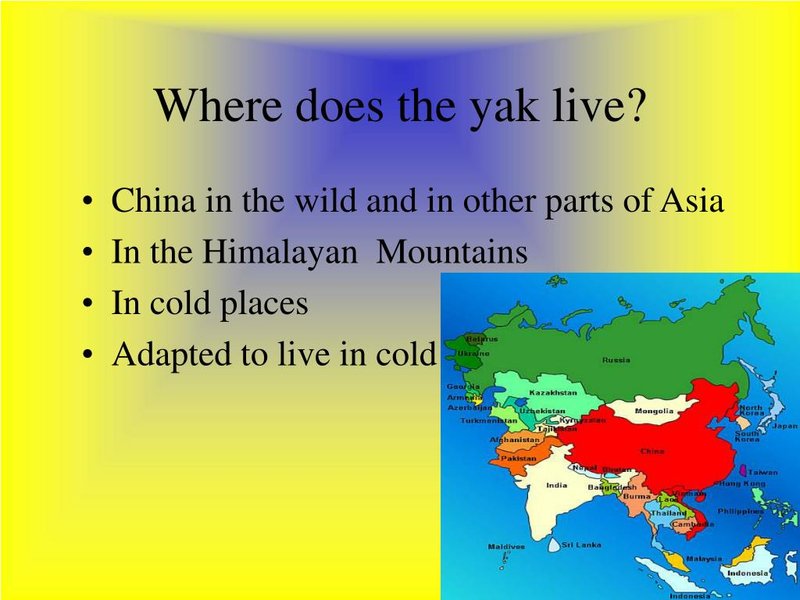
Let’s dive into the world of yaks and explore where they actually live. Understanding their habitat and distribution is not just about geography; it’s about appreciating how these incredible animals have evolved to fit into their surroundings. Grab your hot beverage, and let’s chat about yaks and their homes.
Understanding Yak Habitats
Yaks primarily inhabit the **Himalayan** and **Tibetan Plateau**, which is often referred to as “the roof of the world.” This region is characterized by its high elevation, ranging from about 10,000 to 20,000 feet above sea level. The harsh climate here makes the environment incredibly unique. With temperatures that can dip below freezing for most of the year, yaks have developed thick coats of fur that insulate them from the cold, much like how a warm blanket protects you on a chilly night.
Additionally, the grasslands and scrublands in this environment provide the right kind of foraging opportunities for yaks. These animals are herbivores and primarily feed on grasses, shrubs, and other vegetation found in their harsh surroundings. If you were to take a walk in these high-altitude pastures, you’d see yaks grazing calmly amid stunning mountain views, their thick fur blowing gently in the biting winds.
Physical Adaptations for Cold Climates
Yaks are perfectly designed for their cold habitats. Their long, shaggy hair isn’t just for show; it helps trap heat close to their bodies. Underneath that fur, yaks have a layer of fat that insulates them even further. When temperatures drop, it’s not uncommon for yaks to be seen huddled together, using each other’s body heat to stay warm.
You might wonder how they manage to thrive up there with so little oxygen. Well, yaks have larger lungs and hearts compared to other cattle, a vital adaptation for living in areas where the air is thin. This makes it easier for them to get the oxygen they need, allowing them to roam freely over the rugged terrain.
Distribution of Yaks Across Asia
While the Tibetan Plateau is their main home, yaks can also be found in several other parts of Asia. They roam the **northwestern regions of China**, including Tibet, and can be spotted in parts of **Nepal** and **Bhutan**. Interestingly, some yaks also live in Mongolia and northern India. Their distribution is primarily influenced by altitude and the availability of food sources.
Yaks are also domesticated in many areas, which means you might encounter them in villages where people depend on them for milk, meat, and even transportation. Imagine a local farmer milking a yak or using one to help carry heavy loads through rocky paths—the symbiotic relationship between yaks and humans is quite fascinating.
Wild vs. Domesticated Yaks
There are two distinct types of yaks: wild yaks and domesticated yaks. Wild yaks are larger and have a more robust build than their domesticated counterparts. They also prefer more remote, rugged terrains, while domesticated yaks are generally found in lower-altitude areas where they can be cared for by humans.
Wild yaks roam in herds, often in areas where food is plentiful, but they are more elusive and less seen than the domesticated ones. You might find them grazing on grassy slopes or roaming around herds of domestic yaks, a reminder of their wild origins. Their adaptability to different environments highlights their resilience, and they are a crucial part of the ecosystem in which they live.
The Importance of Yak Conservation
As habitats change due to climate change and human activities, the survival of yaks, both wild and domesticated, is at risk. Overgrazing, habitat destruction, and dwindling food sources pose challenges to their populations. Conservation efforts are essential to protect these remarkable animals and their environments.
Organizations working in these regions focus on sustainable practices that help balance the needs of local communities with the survival of yaks. For instance, they encourage pastoralism that doesn’t overuse certain areas, allowing the land time to recover and ensuring that yaks have the food they need to thrive.
How You Can Help
If you’re passionate about wildlife and conservation, consider supporting initiatives that focus on yak habitats. Simple actions like spreading awareness or donating to organizations working in these regions can make a difference. The more people understand the importance of these animals and their ecosystems, the better chance we have of preserving them for future generations.
Yaks in Popular Culture
Yaks have definitely made a mark beyond their natural habitats. They often appear in stories and folklore, symbolizing strength and endurance. Movies set in the Himalayas frequently feature yaks as part of the landscape, showing them as hardworking animals that support the lives of local communities.
In some cultures, yaks even have spiritual significance. Traditional celebrations and festivals may include yaks, showcasing their important role in the community.
You might even come across yak-themed merchandise or dishes that highlight yak meat or dairy products, reflecting their cultural significance. It’s amazing how these creatures have woven their way into the fabric of life in the regions they inhabit.
Final Thoughts On Yak Habitats
Yaks are truly remarkable animals that embody the spirit of resilience in some of the most inhospitable environments. Understanding where yaks live and how they’ve adapted to their habitats offers insights not just into their lives, but also into the larger ecosystems of the high-altitude regions of Asia.
Their existence is a reminder of the balance between nature and human life. By appreciating and supporting conservation efforts, we can ensure these amazing creatures continue to thrive in their natural homes. Next time you think about yaks, remember their incredible journey through mountains, grasslands, and human history, and consider how you can be a part of their story.

